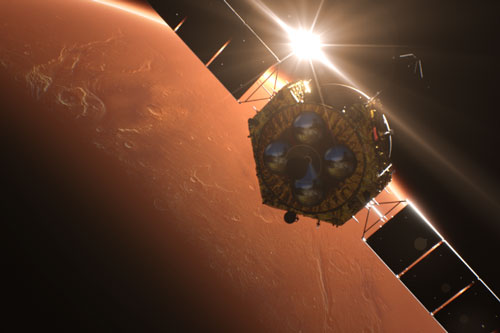Beijing
China’s Tianwen 1 robotic probe entered the orbit above Mars’ polar regions on Monday, moving closer to the red planet, the China National Space Administration said.
The spacecraft activated its 3,000-Newton-thrust orbital-control engine at 5pm to conduct an orbital plane change maneuver to enter polar orbit with a perigee of about 265 kilometres above the red planet, the administration said in a brief statement.
Next, the probe will carry out several orbital adjustment operations to move itself into a parking orbit.
In parking orbit, it will make observations and investigations of the preset landing site.
Before the latest maneuver, Tianwen 1 was travelling around an elliptical Martian orbit with a perigee of about 400km after its arrival in Mars’ gravitational field on Wednesday night, becoming the first Chinese spacecraft to reach the planet. Tianwen 1, the country’s first independent Mars mission, was launched by a Long March 5 heavy-lift carrier rocket on July 23, 2020 from the Wenchang Space Launch Centre in Hainan province, kicking off the nation’s planetary exploration programme.
The 5-metric tonne probe, which consists of two major parts — the orbiter and the landing capsule — flew for 202 days and about 475-million-km on its journey to Mars. Its average flight speed was about 100,000km per hour.










